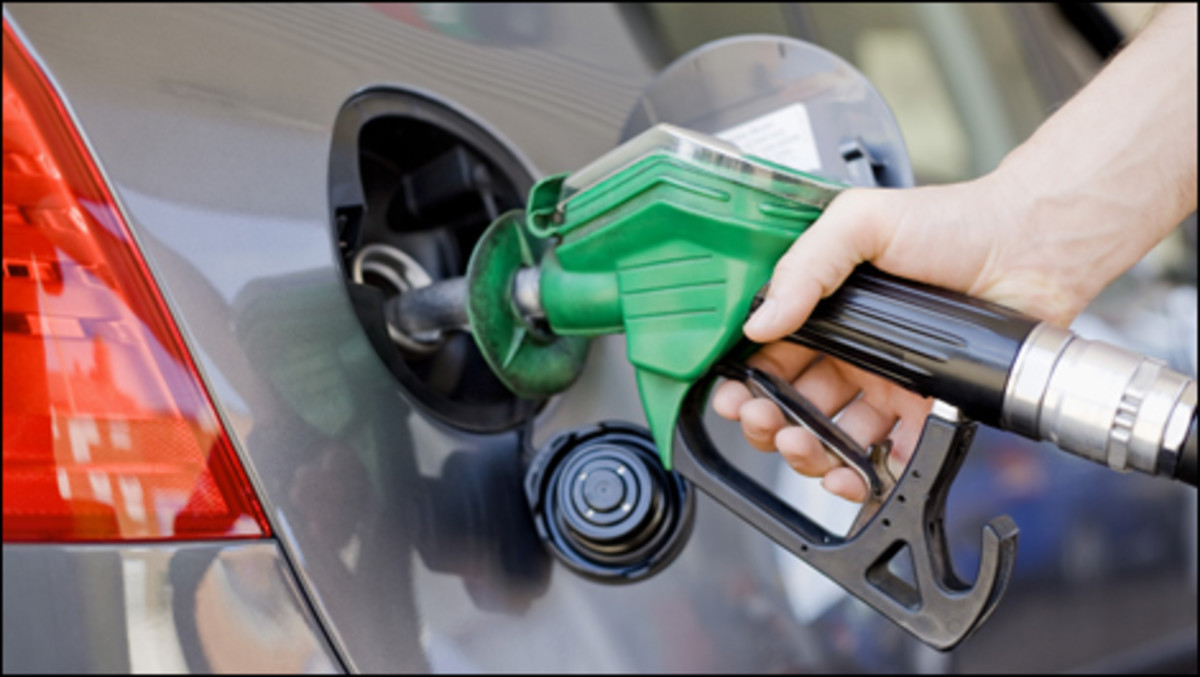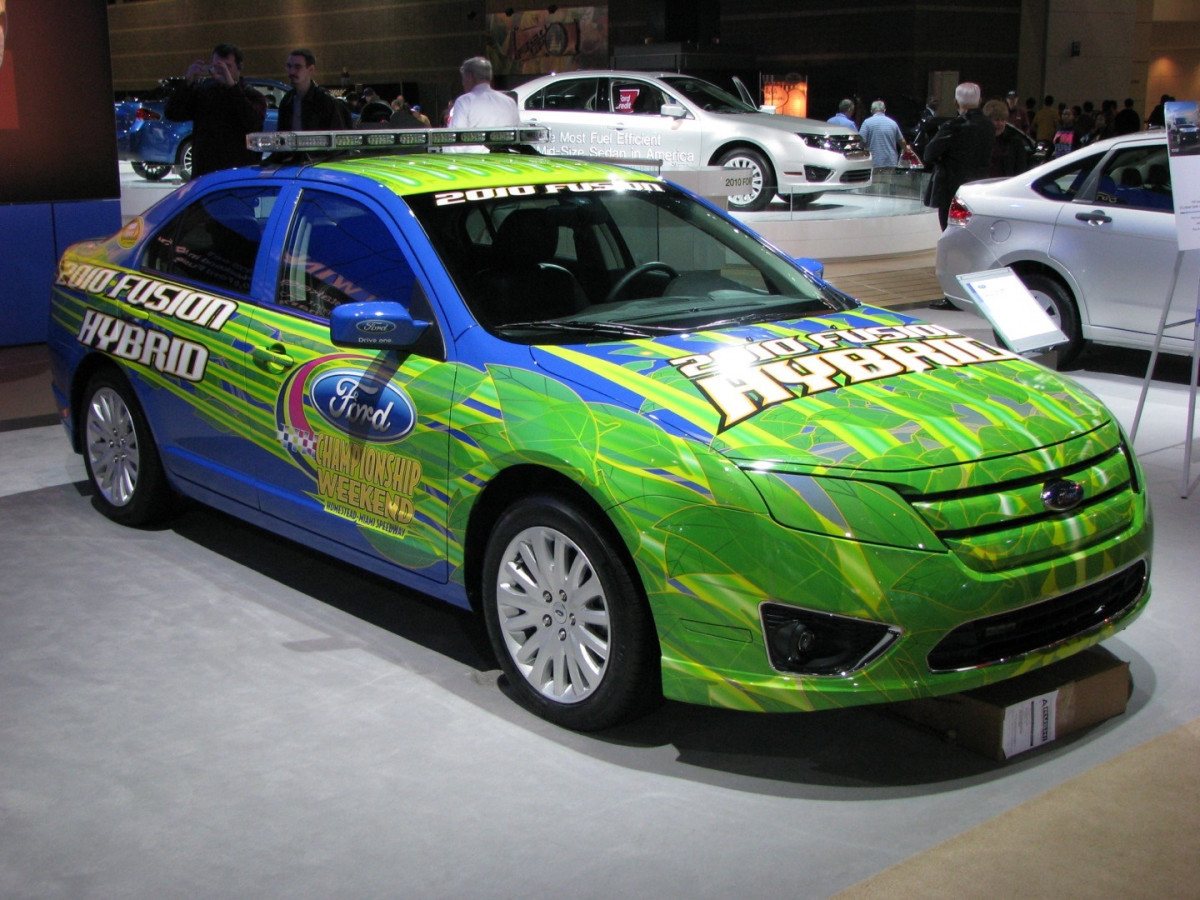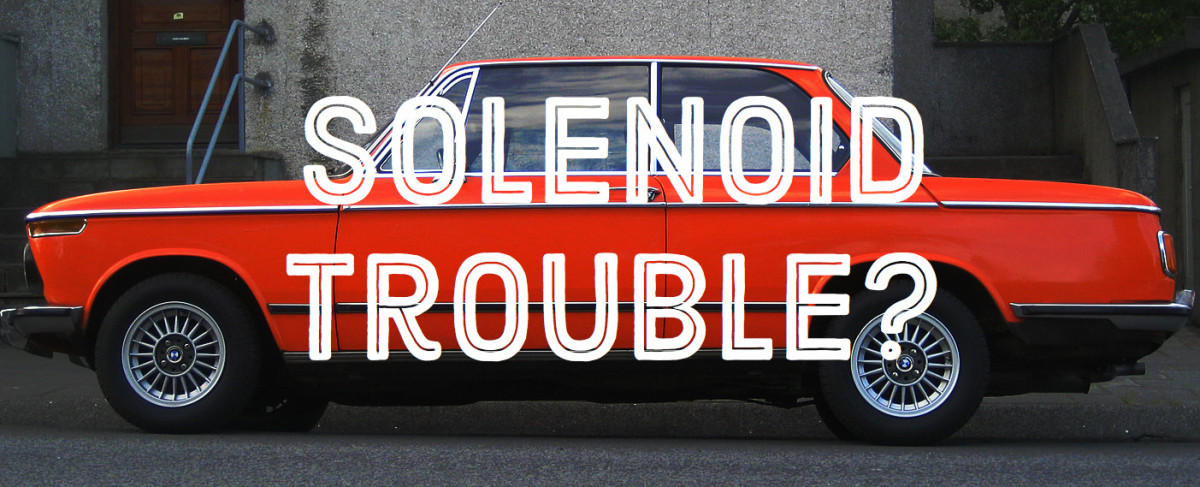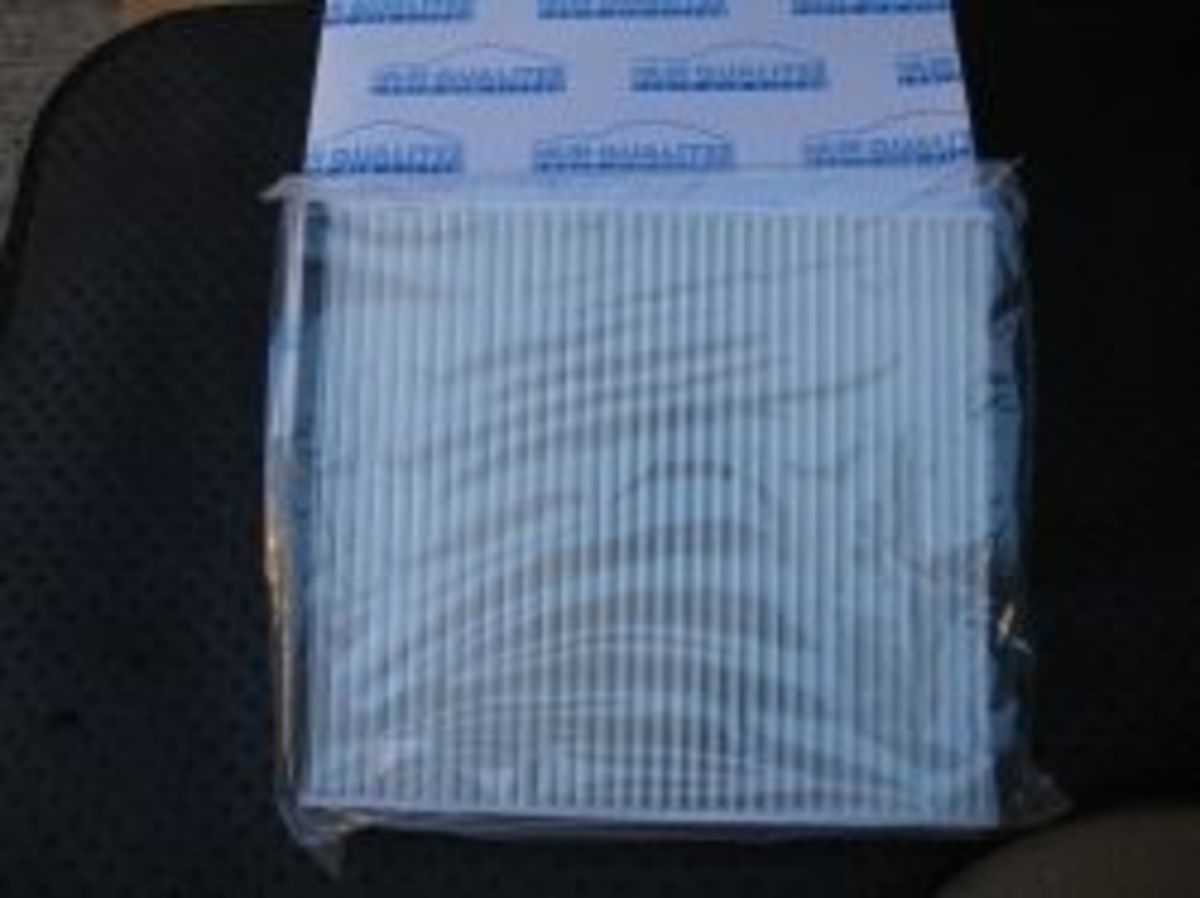The Top 15 Proven Techniques For Saving Fuel
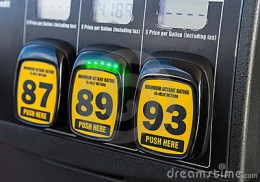
Getting Better Fuel Economy is a Science
Cars are sophisticated heat engines that operate on a thermodynamic cycle (the Otto Cycle actually) to do work on the wheels and push the car forward. Like any heat engine, there's an assosciated efficiency, which is how much work you can get out of the engine for a given input. The input in this case is the chemical bonds of the gasoline and the output is heat. The heat creates high pressure and the pressure moves the cylinders in your engine. You can't change what the gas is made of but you can change the efficiency of the thermodynamic cycle. That will net you more power.
The other way to increase mileage is to reduce the load on the engine. The less work the engine needs to do, the higher the yield you'll get from your tank. Energy can be soaked up by many different parts of the car and the environment, robbing you of motive power and reducing your fuel economy. The following methods of increasing fuel economy all rely in some way on either increasing combustion efficiency or reducing load losses. So let's get right into it!
Better Fuel Economy From the Right Grade of Gas
These days, because of all the emphasis on saving the environment, most fuels are "enriched" with up to 10% ethanol. There are other blends for other types of cars but I'm not talking about E85 or any of those. Ethanol does a couple of things to gas. FIrst, it lowers the air-fuel ratio which means you need less air and more fuel. That's because ethanol contains its own oxidizer. Ethanol is also quite volatile (its ability to become a vapor) and because of this it cools the fuel down when it's sprayed through the injectors. This increases the density of the air in front of the intake port and ultimately commands more fuel to balance it out. Ethanol can produce more power because of these characteristics, which is nice, but it tends to make you burn more gas too. Filling up with straight gas that contains no ethanol will get you better mileage because your air-fuel ratio will be higher and your incoming air-fuel mix will be less dense for any given temperature and pressure.
Now GENERALLY speaking, the lower grades of gas usually have less ethanol or no ethanol. Since ethanol is also an octane booster (and you thought it was just for drinking...), gas stations will blend it with their gas to produce higher octane ratings like 89 or 91. This isn't always the case. I find Shell is just the opposite but usually 87 won't have any ethanol in it so buy that. A word of caution: Your car has to be able to run on low octane gas. If you're driving some turbocharged Mercedes, you'll ruin your engine just to save a couple of bucks. Make sure this option is even viable for your car.
Keep Your Tank Light for Better Mileage
A typical car holds in the neighbourhood of 15 gallons of fuel, give or take, depending on size. That's actually a lot of weight you're hauling around. In the above example you'd be carrying 90 lbs of gas, the weight of a highschool cheerleader ;) Now you don't want to get stranded on the highway either but try driving with 1/3 of a tank instead of a full tank. Only fill up by that much at the pump and you'll be pushing 60 lbs less at all times. I know that when my car's running on fumes, those are the best mpg I get during the entire tank AND it's a thrill to push the envelope like Kramer did with that car salesman in Seinfeld. But seriously, it's simple physics. Three thousand pound car, 60 pounds of gas, 2% less force required to accelerate it. Let's move on.
What's your current mileage?
Keep Your Car Warm for Better Fuel Economy
Do you live in a cold climate or have a winter season? If you leave your car out in the driveway when provisions exist to store it indoors, like in a garage, you won't be the fuel economy you could be getting. The reason is this: If you keep the car warm, the engine oil and gasoline will be warm. Engine oil is easier to pump when it's warm because it has lower viscosity. That means less work on the engine. The gasoline's volitility increases at higher temperatures too so what that means is that when it gets sprayed through the fuel injectors into a fine mist, each droplet will be that much more volitile and will give off more vapors than cold fuel droplets would. This means more bang for your buck, literally. Liquid gasoline doesn't burn anyway, just the vapors and the droplet surface do so you want to get that fuel nice and warm before you head out. This really only makes sense if your garage is full of junk and that's why your car isn't there. If there are already other cars in the garage or the garage isn't built into a nice warm house, this idea won't work. The key here is putting the car somewhere where it's warmer than just sitting outside.
Better Fuel Economy From Keeping Your Foot on the Pedal
Did you know that when you take your foot off the gas pedal, the computer drops spark timing way back? You can test this for yourself. Release pressure on the gas until you believe you're almost off it altogether. Have a look at the tachometer. If you're truly at a very low throttle position (<5%) and you take your foot off completely, the needle will drop and the car will slow down noticeably. The thing is, the differnce in air flow into the engine isn't that much over a couple of percentage points of throttle but your timing gets pulled enough to produce far less power than when the pedal is pressed at all. You can use this to your advantage. Keep your foot on the gas at all times unless you need to brake, even if you're just touching it. It takes some finesse to keep from having to brake all the time but once you get the hang of it, you can save quite a bit of mileage this way. I once managed to drive to work 50km without ever using the brakes. Not even once and I had my foot on the gas the whole time. Ahh, that was a good tank :)
Better Fuel Economy From a Better Air Filter
One of the biggest and most useless things under the hood is the massive airbox that every car comes with. I don't literally mean that it's useless but you can do just fine without it and a high flow cone filter is far better than the stock paper panel filter crap the car came with. I put a cone filter designed for a truck on my car, which is a bit overkill, but the idea here is to remove all pressure head losses assosciated with the filter media. The engine of a car is basically a big air pump. The pistons draw the air in using suction or vacuum. The piston head moves and creates a larger volume, which causes the pressure to drop and that's what sucks air into the engine to fill the void. The more vacuum the piston has to fight against, the more work it takes and the less compression you get when the piston comes back up. Granted there are many restrictions in a car's intake, the filter being a modest one but it's a cheap thing to do and it pays for itself over the course of a few tanks. If you don't want to fork out for a cold air intake kit, which is what you'd have to do to use a cone filter, you can do what I did and rip everything out up to the rubber tubing that contains the Mass Air Flow sensor or MAF. It's important to have enough tubing to separate the MAF from where the air enters because you need laminar flow for it to work correctly but if you've got a few inches to play with, just C-Clamp a cone filter right onto the end of the tubing. The sound is amazing and the flow is much improved. Better flow means better volumetric efficiency and better fuel economy.
Run Some Acetone Through Your Tank for Better Mileage
Acetone is a powerful solvent, very effective at cleaning metal parts and mixes very well with gasoline. Pour a tin of this in the next 1 or 2 tanks and it will dissolve and flush a lot of gunk and deposits from inside the engine. It makes the injectors atomize better (as discussed, this improves combustion) and removes carbonized hot spots that could cause knock. This type of maintenance helps you to re-claim some lost power and fuel economy. A word of warning though. Even though you're probably fine to do this, I can't speak for all cars and some may have fuel line components made of certain plastics which acetone will tend to attack. Over a mere tank or 2 I can't see that this would be a problem but I can't dismiss it either. Try this at your own risk.
Get the Junk Out of the Trunk for Improved Fuel Economy
Reducing the overall weight of the vehicle will mean less force (less torque) is needed to move it. Since torque is proportional to how much gas you burn, you're gas savings will also be more or less proportional to how much weight you can remove from the car. Some people do some extreme things to their cars to save on weight like removing the air conditioning and airbags. I don't recommend that, especially the latter but you could toss the trunk carpet, spare tire and a few other odds and ends if you really want to put your car on a diet.

Mileage on Country Roads
Freeways have high speed limits and most people break those so we're talking 70 MPH or so. At those speeds, aerodynamic forces on the car's cross-section slow it down significantly and it takes more gas to maintain your speed.
On the other hand, city roads are stop and go. You're accelerating all the time and spending most of your time idling and in low gears, running richer than you would while cruising.
So what's the answer? Something in between. And what's in between? Long highway roads (not freeways) with very few lights. IF you have the choice of taking different routes to wherever it is you're going, take these roads, providing they're in good shape because you'll be in the highest (overdrive) gear designed for best fuel economy and yet not going fast enough for aerodynamic drag to have a significant impact. Plus these roads usually have a speed limit that's slightly higher than city road limits, so your car won't be hunting around between overdrive and the next lowest gear. This is one of the best ways to save on gas.
Mileage on Well Paved Roads
Road quality also affects mileage. Think of driving in sand, gravel or snow. You're mileage will always be poor in these conditions because the tires are deforming and slipping around imperfections in the ground, while vibrations are being damped out in the car's suspension. All this accounts for energy lost from the engine. The better the mechanical coupling between the tires and the road, the better your fuel economy. Drive on well paved roads and you'll notice how smooth the ride is. That will pay dividends at the pump.
Touring All-Seasons Give a Mileage Bonus
Just as the road quality impacts mileage, so too do the tires. You want a less aggressive tread design meant for cruising, with a rubber compound compliant enough to damp some road noise from entering the suspension components but durable enough not to deform into the road surface more than it needs to for non-sport type driving. Touring tires are good for this and will outperform your off-road type truck or SUV tires. Just make sure you don't actually take them off-roading ;)
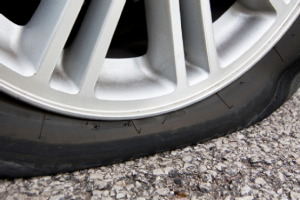
Fuel Economy From Tire Pressure
When tires are flatter than their rated pressure, they deform more under the weight of the car, producing a flat contact patch with the road. While this is nice for drag racing, it takes work to constantly move that flat patch around the circumference of your tire as you drive. This is called rolling resistance. Keep your tires at rated pressure or a couple of psi above rated pressure will increase your mileage because it reduces rolling resistance. A bit of over-inflation is ok because of extra weight in the car and small leakage losses over time but don't overdo it. If you put too much air in the tires, you'll lose traction and the tires will be so stiff that every bump you hit will bypass the tires altogether and go right into the shocks. The tires are supposed to be part of your suspension so you want to use them for that purpose. Keep proper inflation and you'll notice your tanks go further.
Re-Tune Your Car's O2 Sensors for Better Mileage
For those of you who have tuning tools for your cars, you can access tables for your O2 sensor voltage. This is a set of thresholds telling the computer what O2 sensor voltage is rich and what voltage is lean. Being a narrow band sensor, there's a big change in voltage over a very small change in air-fuel ratio so this trick is somewhat risky but if you make very small changes to the voltage, lowering the rich and lean values together by 25 mV at a time and doing regular road scans you can make your car run mostly on the lean side of stoich in closed loop. Now since every car is different, make sure this won't damage your engine. I wouldn't even touch it if you have a high compression, boosted or otherwise performance tuned engine. A 9.4:1 compression ratio all-iron block 3800 is at very low risk of engine failure from running a little lean so you can get away with it in that case but do your homework on your specific vehicle. The idea is that you get the best fuel economy with a slightly lean air-fuel ratio because the relative absence of heavy fuel means you're mostly heating air, which has such a low heat capacity that it can reach very high temperatures in a lean burn scenario. If carefully tuned and monitored these higher temps translate into greater thermal efficiency and therefore mileage. Doing this will increase your NOX emissions though and you may fail your emissions testing with a tune like this.

PCM Tuning Improves Fuel Economy
Once again, for you tuners, cleaning up your fuel trims (MAF table), volumetric efficiency table and good fuel spark table will result in better fuel economy. Eliminating any fluctuations in the MAF and VE tables for example, will prevent rapid changes in injector flow rate due to poor calibration. Preventing rapid fueling changes reduces knock and allows the laggy closed-loop system to adjust fuel more smoothly. This results in lower fuel consumption. Checking the spark table for knock and areas for spark advance will also recover some lost power and save gas. Factory tuned vehicles are conservative on the spark advance because the tune has to be good for the life of the car and in every possible environmental condition and grade of gas supported. That's a lot of variables for a one-size-fits-all tune to cover. This is why you can almost always get a little extra by overriding these tables, dealing with problem areas and advancing the spark by a degree or 2 in good areas.
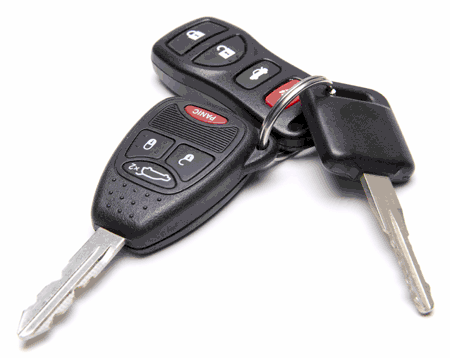
Better Mileage From Turning the Car Off
You ever get stuck in one of those left hand turn lanes in rush-hour? There's a massive line of cars in front of you and the light takes 3 minutes to change. Turn your car off. There's no point burning gas and not going anywhere. Now you're not going to see a benefit if you do this for 10 seconds but if your anticipated wait is 1 min or more, it absolutely saves on gas. Just make sure you can start it again ;)
Sometimes if I'm going down a big long hill, I throw the car in neutral to keep the revs down OR I'll turn the car off in neutral and glide as long as possible. I highly recommend you DON'T do that though because you'll lose power steering and power brakes and could lose control of the car. So just forget I said that :)
Better Fuel Economy From Gentle Driving
Last but not least, if you have a lead foot, ease off on the gas. Accelerate slowly and consistenly, don't tailgate and don't go fast enough to overtake the guy in front of you. Maintain good gaps and an average speed of the cars around you. This type of gentle driving may not be fun but it will prevent a lot of throttle use, which saves on gas. Every time you hit the gas, the computer calculates the "rate of change" of the pedal being pressed and adds a burst of fuel in proportion to that rate of change. The idea is to anticipate a sudden large influx of air due to mashing the pedal, so the engine doesn't lean out and die (or blow up). It's a necessary protection feature but it wastes gas. Drive gently and you'll keep that extra fuel to a minimum. Driving at low overall throttles will also keep you out of "power enrichment mode" which is when the commanded air-fuel ratio changes to something much richer than before, to get you power when you need it. That'll save gas too.
In Closing
If you were to do most of the above ideas, even the easy ones, you'd see a very noticeable improvement in your fuel economy. Since gas is as much a currency as cash these days, it's totally worth it to invest the small amount of time needed to address some of these issues. Keep your car light and in good working order, pick your route well and control your driving habits. You'll wonder why you didn't do it sooner.

